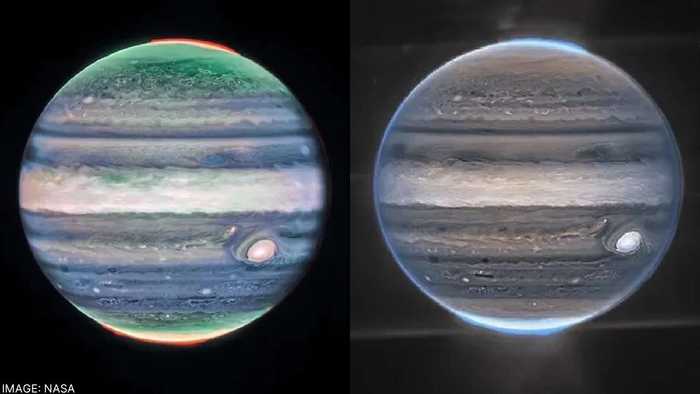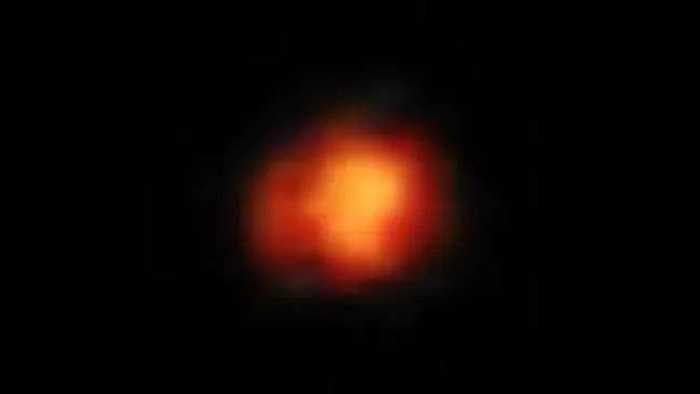Published 23:35 IST, December 25th 2023
Webb telescope turns two on Dec 25. What has the most powerful observatory taught us?
The Webb telescope changed the course of astronomy when its first 'Deep Field' image of the universe released by NASA in July last year.
Advertisement
Exactly two years ago in 2021, the Ariane 5 rocket lifted off from French Guiana beginning a new era of space exploration. Encased inside the rocket's payload fairing was the world's most powerful observatory - the James Webb Space Telescope - which resulted from 17 long years of hard work by over 1200 scientists from 14 countries.

Fast forward couple of years since the launch, astronomers know that they can peer further back in time than they ever did before, all because of Webb's unmatched infrared capabilities.
Advertisement
What has Webb taught us in two years?
The Webb telescope changed the course of astronomy when its first 'Deep Field' image of the universe. The jaw-dropping image was released by NASA and its partners European Space Agency and the Canadian Space Agency (all three built the telescope) on July 12 as the deepest and sharpest infrared image of the cosmos.
Webb is designed to observe small patches of the sky to catch infrared wavelength of light, the kind which is invisible to the naked eye but can be felt as heat. Infrared has its own advantages in cosmology as its long wavelength can penetrated thick gas and dust clouds revealing previously obscured images.
Advertisement
For an unhindered infrared observation, Webb is placed at the second Lagrange point (L2) 15 lakh km from Earth.

The said image features the SMACS 0723 galaxy cluster and light from one of the galaxies in the picture reached Webb after travelling 13.1 billion years ago, making it the farthest scientists have ever seen back in time. This ability of Webb proved that the telescope can take us as far as the birth of the universe believed to be around 14 billion years ago.
Advertisement
The telescope, although built to study objects mind-boggingly far away, also turned its eye to our own solar system to surprise scientists again.

These two pictures of Jupiter above were taken using different filters but both of them surprisingly revealed the glimmering Auroras in the gas giant's polar regions.
Advertisement
Thanks to Webb's infrared vision, a faint and rare ring around the planet, along with some of its many Moons were also visible. Interestingly, the telescope also helped astronomers discover a 4800 km long high-speed jet stream travelling at 515 km per hour in Jupiter's lower stratosphere.
Another exciting picture features Uranus, which many didn't knew had rings around it. Earlier this month, NASA released another picture by Webb of the seventh planet in our solar system and the telescope brought out the planet's brilliant rings
Advertisement
Apart from many exiting features, it also managed to capture Uranus' elusive Zeta ring- the faint and diffuse ring closest to the planet.

While Webb's achievements have been many, one of the most intriguing was the discovery of water molecules in an ultra-hot exoplanet's atmosphere. This gaseous planet, the WASP-18b is said to be located around 400 light-years away with traces of water in its atmosphere despite one of its side gets heated up to 1000°C. Webb's temperature map revealed that this planet is tidally locked around its star meaning, one of its side is in permanent darkness.
Webb's achievements also include presenting the most iconic objects in space in a completely new light. One of these objects is the 'Pillars of Creation,' the region within the Eagle Nebula lying about 6500 light-years away.

The combined powers of Webb's Near-Infrared Camera (NIRCam) and Mid-Infrared Instrument (MIRI) presented it with completely new features since the telescope was able to peer through the thick dust.
Another major achievement which was confirmed as recent as August this year is the existence of one of the oldest galaxy ever know. This galaxy in question is the Maisie's galaxy, which is named after its discoverer, an astronomer at University of Texas, Steven Finkelstein's 9-year-old daughter.

Visible as just an orange blob in the picture above, this galaxy has been confirmed to have been existed when the universe was approximately 390 million years old.
In the last two years, Webb has captured hundreds of pictures from different corners of the universe and will continue to do so. Expected to last at least 10 years, the Webb telescope will be complemented with the Hubble space telescope in the quest to get to the very origin of the universe and how it evolved to take its present form.
23:35 IST, December 25th 2023